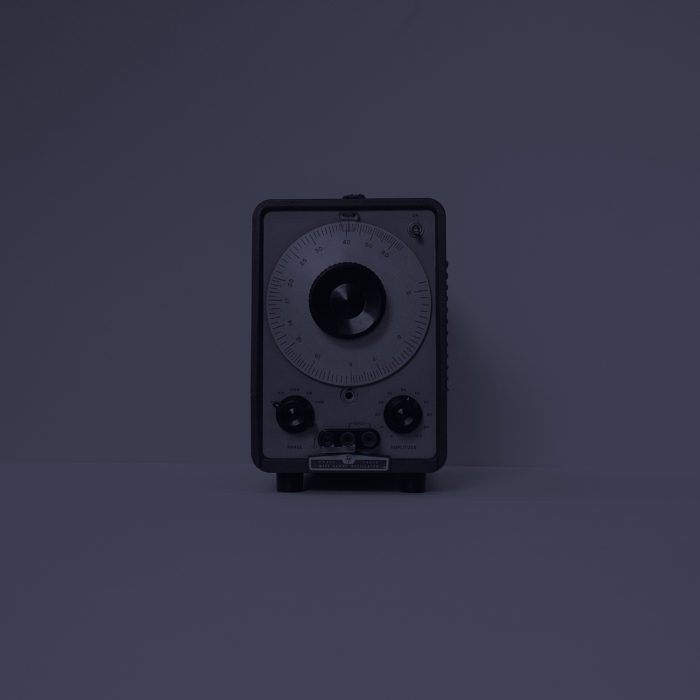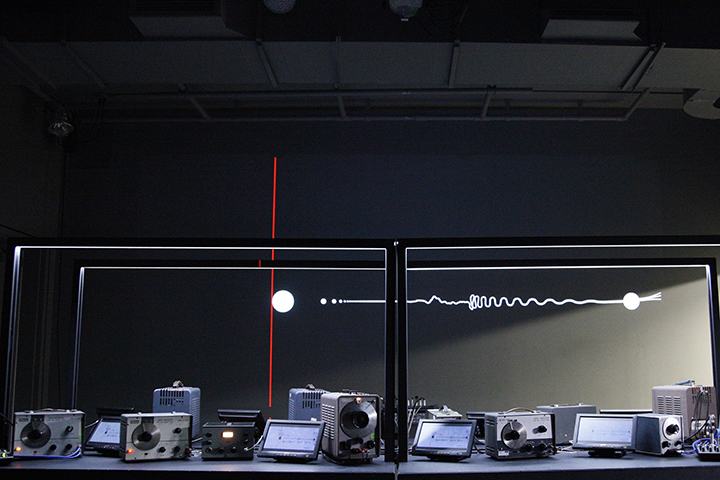Ensemble d’Oscillateurs (oscillator ensemble) was founded in 2016 by Nicolas Bernier at Université de Montréal. In this singular ensemble, each of the ten performers is playing on old analogue oscillators, leaving the performers essentially with the two more basic musical parameters: frequency and amplitude. The oscillators producing sine tones, the timbre of the instruments indeed loses some of its significance.
The first LINE release of the ensemble, 4 compositions (see LINE_098, 2018) was mainly proposing new pieces composed specifically for the ensemble as well as an interpretation of a graphic score. This new release proposes a completely new and challenging approach to sine tone performance: the adaptation for ten oscillators of two seminal early electronic music pieces. First is an excerpt of ‘Jar Piece’ composed by Pauline Oliveros in 1966 followed by 5 movements of Faust, a masterpiece composed by Else Marie Pade in 1962. This process of transcription and interpretation was not without challenges and complexity.
This release is accompanied by an extensive 145 page digital book Sine Waves Interpretations—Notes on an Adaptation and Transcription Process of Electroacoustic Works which includes the scores produced by the ensemble and a text by Nicolas Bernier and scholars Guillaume Boutard (digital preservation researcher) and Caroline Traube (acoustic and psychoacoustic researcher) with a contextualization and discussion around the process.
It is certainly the first time in history that those pieces are re-created for ten analogue oscillators and LINE is proud to be able to bring such a precise and singular work to sharp ears.


